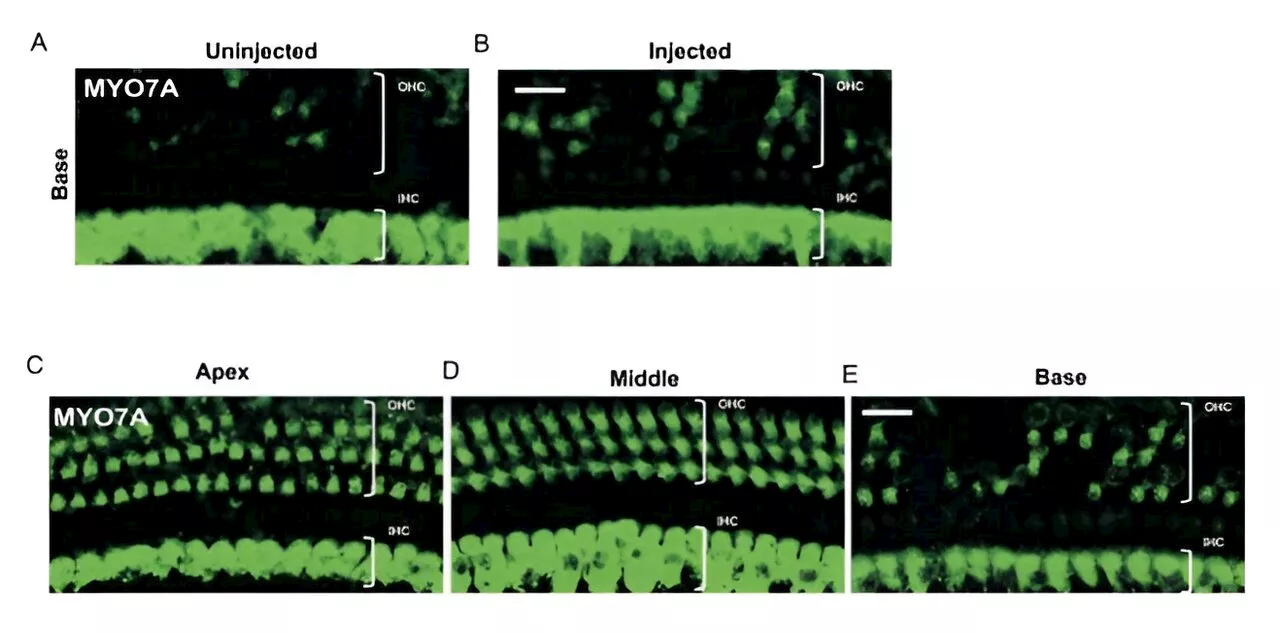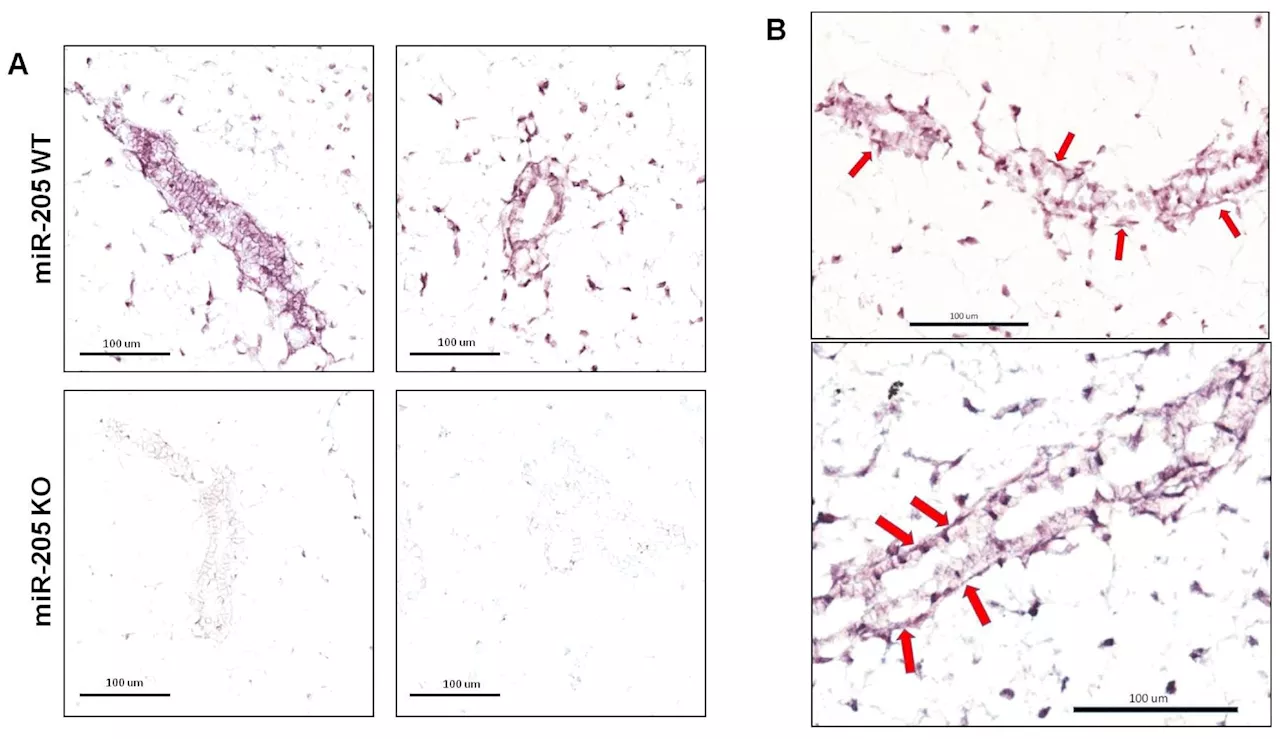Genetic loss of miR-205 in mice enhances mammary gland development and branching, challenging previous lethality findings and highlighting its onco-suppressive functions.
By Dr. Sanchari Sinha Dutta, Ph.D.Jul 30 2024 A study published in the journal Non-Coding RNA describes the involvement of microRNA-205 in mammary gland development in female mice.
MicroRNA-205 has also been found to be associated with mammary gland development. It is highly expressed in the basal epithelium but not the luminal compartment. Its expression increases in both basal and luminal epithelium during pregnancy and lactation. The involvement of microRNA-205 in mammary gland stem cell regeneration has also been evidenced.
Generation of mouse model The scientists generated a conditional microRNA-205 knockout mouse model using the well-described Cre-loxP technology. Using in situ hybridization technique, they confirmed the loss of microRNA-205 expression in the mammary gland of knockout mice. They further confirmed the knockout using Northern Blot and qRT-PCR methods.
They tested their hypothesis by analyzing microRNA-205 knockout mammary glands at different stages of development and found no significant structural and developmental defects. They found that microRNA-205 knockout female mice were perfectly able to feed their pups. Similarly, they observed that microRNA-205 knockout ducts have pseudostratified and hyperplastic epithelia with frequent mitoses at five months of age.
These findings highlight onco-suppressive functions of microRNA-205 that control cell proliferation and survival by regulating the expression of several targets.
Cancer Genetic Mammary Gland Cell Epidermis Gene Gene Expression Genes Growth Factor Hybridization Knockout Microrna Mouse Model Pregnancy Receptor RNA Signaling Pathway
United Kingdom Latest News, United Kingdom Headlines
Similar News:You can also read news stories similar to this one that we have collected from other news sources.
 Work starts on 205 new homes near Royal Blackburn HospitalThe first homes will initially be advertised to East Lancashire Hospitals NHS Trust staff
Work starts on 205 new homes near Royal Blackburn HospitalThe first homes will initially be advertised to East Lancashire Hospitals NHS Trust staff
Read more »
 Genetic diagnostics of ultra-rare diseases: Large multicenter study identifies 34 new genetic diseasesThe majority of rare diseases have a genetic cause. The underlying genetic alteration can be found more and more easily, for example, by means of exome sequencing (ES), leading to a molecular genetic diagnosis. ES is an examination of all sections of our genetic material (DNA) that code for proteins.
Genetic diagnostics of ultra-rare diseases: Large multicenter study identifies 34 new genetic diseasesThe majority of rare diseases have a genetic cause. The underlying genetic alteration can be found more and more easily, for example, by means of exome sequencing (ES), leading to a molecular genetic diagnosis. ES is an examination of all sections of our genetic material (DNA) that code for proteins.
Read more »
 Novel genome editing approach restores hearing in adult preclinical models with genetic deafnessMass Eye and Ear researchers restored hearing in preclinical mouse models with a specific form of inherited deafness called DFNA50 caused by mutations in microRNA, by using a novel in vivo CRISPR genome editing approach.
Novel genome editing approach restores hearing in adult preclinical models with genetic deafnessMass Eye and Ear researchers restored hearing in preclinical mouse models with a specific form of inherited deafness called DFNA50 caused by mutations in microRNA, by using a novel in vivo CRISPR genome editing approach.
Read more »
 Racial disparities in dementia determined by social factors rather than genetic ancestry, finds studyRacial disparities in dementia are due to social determinants of health, with genetic ancestry playing no role, according to a new study led by researchers at Washington University School of Medicine in St. Louis.
Racial disparities in dementia determined by social factors rather than genetic ancestry, finds studyRacial disparities in dementia are due to social determinants of health, with genetic ancestry playing no role, according to a new study led by researchers at Washington University School of Medicine in St. Louis.
Read more »
 Girl, 4, with rare genetic disorder evacuated from Gaza - but suffers huge seizureJulia Abu Zeiter has finally been evacuated from the warzone - but her parents were denied permission to leave the territory.
Girl, 4, with rare genetic disorder evacuated from Gaza - but suffers huge seizureJulia Abu Zeiter has finally been evacuated from the warzone - but her parents were denied permission to leave the territory.
Read more »
 One-time prime editing targets common genetic cause of cystic fibrosisResearchers optimized prime editing for the efficient correction of the cystic fibrosis transmembrane conductance regulator F508del mutation in human airway epithelial cells, achieving high correction efficiencies and functional restoration with minimal off-target effects.
One-time prime editing targets common genetic cause of cystic fibrosisResearchers optimized prime editing for the efficient correction of the cystic fibrosis transmembrane conductance regulator F508del mutation in human airway epithelial cells, achieving high correction efficiencies and functional restoration with minimal off-target effects.
Read more »
